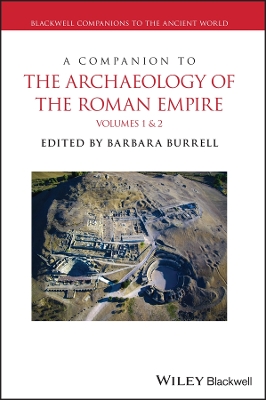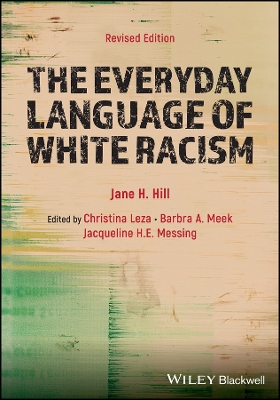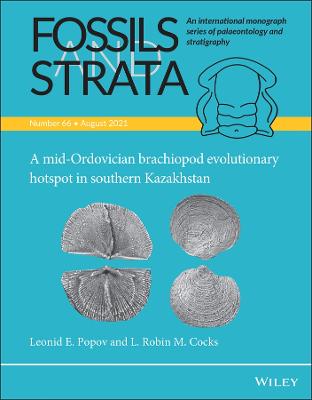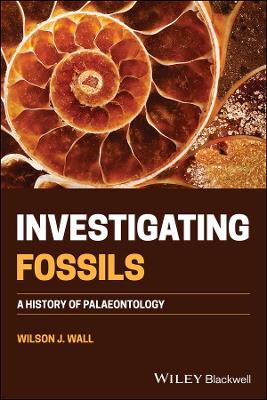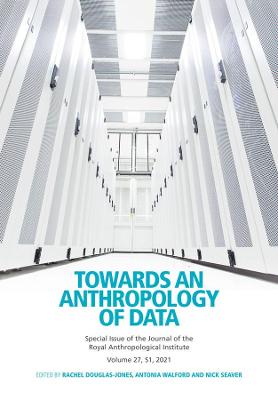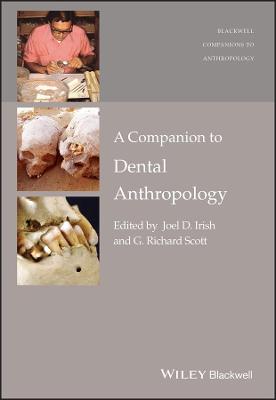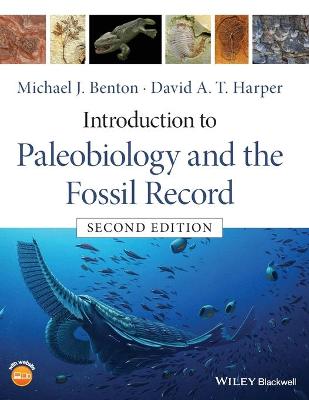Paleontological Data Analysis
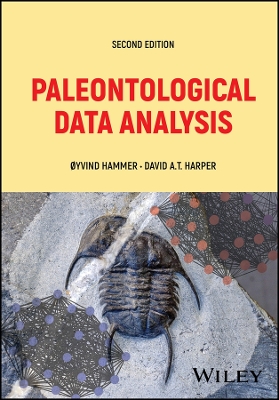 -10%
portes grátis
-10%
portes grátis
Paleontological Data Analysis
Harper, David A. T.; Hammer, Oyvind
John Wiley & Sons Inc
04/2024
400
Dura
Inglês
9781119933939
15 a 20 dias
Acknowledgements xi
1 Introduction 1
1.1 The nature of paleontological data 1
1.2 Advantages and pitfalls of paleontological data analysis 5
1.3 Software 7
References 8
2 Statistical concepts 9
2.1 The population and the sample 9
2.2 The frequency distribution of the population 9
2.3 The normal distribution 11
2.4 Cumulative probability 12
2.5 The statistical sample, estimation of distribution parameters 14
2.6 Null hypothesis significance testing 16
2.7 Bayesian inference 20
2.8 Exploratory data analysis 22
References 22
3 Introduction to data visualization 24
3.1 Graphic design principles 24
3.2 Line charts 25
3.3 Scatter plots 26
3.4 Histograms 26
3.5 Bar chart, box, and violin plots 29
3.6 Normal probability plot 29
3.7 Pie charts 31
3.8 Ternary plots 32
3.9 Heat maps, 3D plots, and Geographic Information System 33
3.10 Plotting with R and Python 33
References 37
4 Univariate and bivariate statistical methods 38
4.1 Parameter estimation and confidence intervals 38
4.2 Testing for distribution 40
4.3 Two-sample tests 43
4.4 Multiple-sample tests 52
4.5 Correlation 58
4.6 Bivariate linear regression 64
4.7 Generalized linear models 70
4.8 Polynomial and nonlinear regression 73
4.9 Mixture analysis 74
4.10 Counts and contingency tables 76
References 78
5 Introduction to multivariate data analysis 81
5.1 Multivariate distributions 82
5.2 Parametric multivariate tests - Hotelling's T 2 82
5.3 Nonparametric multivariate tests - permutation test 85
5.4 Hierarchical cluster analysis 86
5.5 K-means and k-medoids cluster analysis 92
References 94
6 Morphometrics 96
6.1 The allometric equation 97
6.2 Principal components analysis 101
6.3 Multivariate allometry 108
6.4 Linear discriminant analysis 112
6.5 Multivariate analysis of variance 116
6.6 Fourier shape analysis in polar coordinates 116
6.7 Elliptic Fourier analysis 119
6.8 Hangle Fourier analysis 122
6.9 Eigenshape analysis 123
6.10 Landmarks and size measures 125
6.11 Procrustes fitting 127
6.12 PCA of landmark data 130
6.13 Thin-plate spline deformations 132
6.14 Principal and partial warps 136
6.15 Relative warps 139
6.16 Regression of warp scores 141
6.17 Common allometric component analysis 142
6.18 Landmarks in 3D 143
6.19 Disparity measures 144
6.20 Morphogroup identification with machine learning 146
6.21 Case study: the ontogeny of a Silurian trilobite 153
References 157
7 Directional and spatial data analysis 162
7.1 Analysis of directions and orientations in 2D 162
7.2 Analysis of directions and orientations in 3D 164
7.3 Spatial point pattern analysis 166
References 173
8 Analysis of tomographic and 3D-scan data 174
8.1 The technology of x-ray tomography 174
8.2 Processing of volume data 175
8.3 Functional morphology with 3D data 180
References 182
9 Estimating paleobiodiversity 184
9.1 Species richness estimation 185
9.2 Rarefaction and related methods 187
9.3 Diversity curves, origination, and extinction rates 192
9.4 Abundance-based biodiversity indices 196
9.5 Taxonomic distinctness 202
9.6 Comparison of diversity indices 207
9.7 Abundance models 208
References 212
10 Paleoecology and paleobiogeography 216
10.1 Paleobiogeography 216
10.2 Paleoecology 217
10.3 Association similarity indices for presence-absence data 219
10.4 Association similarity indices for abundance data 223
10.5 ANOSIM and PerMANOVA 228
10.6 Principal coordinates analysis 229
10.7 Non-metric multidimensional scaling 232
10.8 Correspondence analysis 236
10.9 Detrended correspondence analysis 240
10.10 Seriation 242
10.11 Nonlinear dimensionality reduction 245
10.12 Canonical correspondence analysis 248
10.13 Indicator species 251
10.14 Network analysis 252
10.15 Size-frequency and survivorship curves 254
10.16 Case study: Devonian paleobiogeography 256
References 259
11 Calibration - estimating paleoenvironments 263
11.1 Modern analog technique 263
11.2 Weighted averaging 265
11.3 Weighted averaging partial least squares 267
11.4 Which calibration method? 269
11.5 Case study: Late Holocene temperature inferred from chironomids 271
References 271
12 Time series analysis 273
12.1 Spectral analysis 274
12.2 Wavelet analysis 282
12.3 Autocorrelation 284
12.4 Cross-correlation 287
12.5 Runs test 290
12.6 Time Series Trends and Regression 291
12.7 Smoothing and filtering 293
References 297
13 Quantitative biostratigraphy 299
13.1 Zonation of a single section 299
13.2 Confidence intervals on stratigraphic ranges 301
13.3 Regional and global biostratigraphic correlation 304
13.4 Age models 330
References 335
14 Phylogenetic analysis 338
14.1 A dictionary of cladistics 338
14.2 Parsimony analysis 339
14.3 Characters 341
14.4 Algorithms for Parsimony Analysis 342
14.5 Character state reconstruction 347
14.6 Evaluation of characters and trees 348
14.7 Case study: the systematics of heterosporous ferns 355
14.8 Other methods for phylogenetic analysis 359
14.9 Phylogenetic Comparative Methods 362
References 368
Index 371
Acknowledgements xi
1 Introduction 1
1.1 The nature of paleontological data 1
1.2 Advantages and pitfalls of paleontological data analysis 5
1.3 Software 7
References 8
2 Statistical concepts 9
2.1 The population and the sample 9
2.2 The frequency distribution of the population 9
2.3 The normal distribution 11
2.4 Cumulative probability 12
2.5 The statistical sample, estimation of distribution parameters 14
2.6 Null hypothesis significance testing 16
2.7 Bayesian inference 20
2.8 Exploratory data analysis 22
References 22
3 Introduction to data visualization 24
3.1 Graphic design principles 24
3.2 Line charts 25
3.3 Scatter plots 26
3.4 Histograms 26
3.5 Bar chart, box, and violin plots 29
3.6 Normal probability plot 29
3.7 Pie charts 31
3.8 Ternary plots 32
3.9 Heat maps, 3D plots, and Geographic Information System 33
3.10 Plotting with R and Python 33
References 37
4 Univariate and bivariate statistical methods 38
4.1 Parameter estimation and confidence intervals 38
4.2 Testing for distribution 40
4.3 Two-sample tests 43
4.4 Multiple-sample tests 52
4.5 Correlation 58
4.6 Bivariate linear regression 64
4.7 Generalized linear models 70
4.8 Polynomial and nonlinear regression 73
4.9 Mixture analysis 74
4.10 Counts and contingency tables 76
References 78
5 Introduction to multivariate data analysis 81
5.1 Multivariate distributions 82
5.2 Parametric multivariate tests - Hotelling's T 2 82
5.3 Nonparametric multivariate tests - permutation test 85
5.4 Hierarchical cluster analysis 86
5.5 K-means and k-medoids cluster analysis 92
References 94
6 Morphometrics 96
6.1 The allometric equation 97
6.2 Principal components analysis 101
6.3 Multivariate allometry 108
6.4 Linear discriminant analysis 112
6.5 Multivariate analysis of variance 116
6.6 Fourier shape analysis in polar coordinates 116
6.7 Elliptic Fourier analysis 119
6.8 Hangle Fourier analysis 122
6.9 Eigenshape analysis 123
6.10 Landmarks and size measures 125
6.11 Procrustes fitting 127
6.12 PCA of landmark data 130
6.13 Thin-plate spline deformations 132
6.14 Principal and partial warps 136
6.15 Relative warps 139
6.16 Regression of warp scores 141
6.17 Common allometric component analysis 142
6.18 Landmarks in 3D 143
6.19 Disparity measures 144
6.20 Morphogroup identification with machine learning 146
6.21 Case study: the ontogeny of a Silurian trilobite 153
References 157
7 Directional and spatial data analysis 162
7.1 Analysis of directions and orientations in 2D 162
7.2 Analysis of directions and orientations in 3D 164
7.3 Spatial point pattern analysis 166
References 173
8 Analysis of tomographic and 3D-scan data 174
8.1 The technology of x-ray tomography 174
8.2 Processing of volume data 175
8.3 Functional morphology with 3D data 180
References 182
9 Estimating paleobiodiversity 184
9.1 Species richness estimation 185
9.2 Rarefaction and related methods 187
9.3 Diversity curves, origination, and extinction rates 192
9.4 Abundance-based biodiversity indices 196
9.5 Taxonomic distinctness 202
9.6 Comparison of diversity indices 207
9.7 Abundance models 208
References 212
10 Paleoecology and paleobiogeography 216
10.1 Paleobiogeography 216
10.2 Paleoecology 217
10.3 Association similarity indices for presence-absence data 219
10.4 Association similarity indices for abundance data 223
10.5 ANOSIM and PerMANOVA 228
10.6 Principal coordinates analysis 229
10.7 Non-metric multidimensional scaling 232
10.8 Correspondence analysis 236
10.9 Detrended correspondence analysis 240
10.10 Seriation 242
10.11 Nonlinear dimensionality reduction 245
10.12 Canonical correspondence analysis 248
10.13 Indicator species 251
10.14 Network analysis 252
10.15 Size-frequency and survivorship curves 254
10.16 Case study: Devonian paleobiogeography 256
References 259
11 Calibration - estimating paleoenvironments 263
11.1 Modern analog technique 263
11.2 Weighted averaging 265
11.3 Weighted averaging partial least squares 267
11.4 Which calibration method? 269
11.5 Case study: Late Holocene temperature inferred from chironomids 271
References 271
12 Time series analysis 273
12.1 Spectral analysis 274
12.2 Wavelet analysis 282
12.3 Autocorrelation 284
12.4 Cross-correlation 287
12.5 Runs test 290
12.6 Time Series Trends and Regression 291
12.7 Smoothing and filtering 293
References 297
13 Quantitative biostratigraphy 299
13.1 Zonation of a single section 299
13.2 Confidence intervals on stratigraphic ranges 301
13.3 Regional and global biostratigraphic correlation 304
13.4 Age models 330
References 335
14 Phylogenetic analysis 338
14.1 A dictionary of cladistics 338
14.2 Parsimony analysis 339
14.3 Characters 341
14.4 Algorithms for Parsimony Analysis 342
14.5 Character state reconstruction 347
14.6 Evaluation of characters and trees 348
14.7 Case study: the systematics of heterosporous ferns 355
14.8 Other methods for phylogenetic analysis 359
14.9 Phylogenetic Comparative Methods 362
References 368
Index 371


